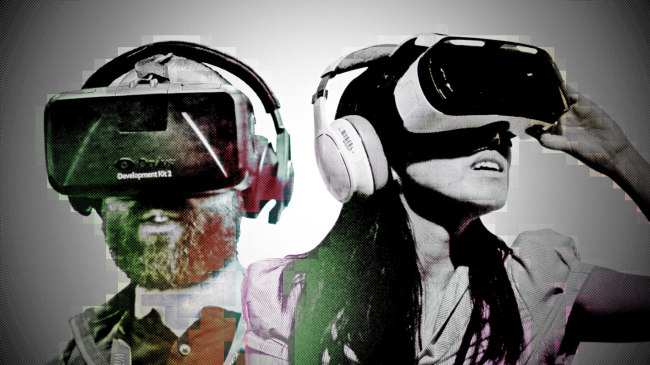Virtual reality is a technology that creates the illusion of being fully immerged in the simulated worlds. But the profit potential from the burgeoning industry is becoming less and less of an illusion.
Goldman Sachs recently predicted virtual reality, coupled with augmented reality, would become an $80 billion industry by 2025, possibly overtaking the TV market by 2026.
“As the technology advances, price points decline, and an entire new marketplace of applications hit the market, we believe virtual and augmented reality has the potential to spawn a multibillion-dollar industry, and possibly be as game-changing as the advent of the PC,” the analysts noted.
Goldman Sachs recently predicted virtual reality, coupled with augmented reality, would become an $80 billion industry by 2025, possibly overtaking the TV market by 2026.
“As the technology advances, price points decline, and an entire new marketplace of applications hit the market, we believe virtual and augmented reality has the potential to spawn a multibillion-dollar industry, and possibly be as game-changing as the advent of the PC,” the analysts noted.

VR’s steep growth rates and innovation are sometimes compared to those of PCs and smartphones.
While the PC revolution in the early 1990s was driven by businesses and the smartphone revolution of the late 2000s by consumers, virtual reality has more potential to explode as the revolution is led by both businesses and users.
Tech companies are already betting big on VR. Customers also seem ready to spend.
Google Cardboard, which costs $20, introduced VR to mainstream users. Google, one of the most active players in the field, said it has shipped more than 5 million Cardboard viewers globally. The Internet giant opened its first dedicated VR business unit this month.
Samsung Electronics’ $99 Gear VR Powered by Oculus sold out on Amazon during the holiday season – in two days. Because the VR headset works paired with Samsung smartphones, the company hopes its VR push to help attract loyal customers and elevate its device sales overall.
The video game industry, among others, is expected to experience the most disruption from the VR revolution. Interactive, immersive VR adventures could offer the ultimate gaming experience to users.
Other industries have also begun diverse experiments to transform traditional activities like buying new cars, seeking medical advice or getting an education.
A unique trend in Korea is that K-pop stars are increasingly adopting the VR technology to expand their global presence and better communicate with their fans in every corner of the world.
Their lavishly-designed hologram concerts travel around the world, while 360-degree VR videos are used for their marketing campaigns.
Despite the rosy outlook, the industry still faces challenges. They still need to deal with technological difficulties such as battery life and wireless connection speeds. Consumers can access VR on smartphones and consoles, but need PCs with higher graphics capabilities to use high-end headsets.
But industry watchers agree that 2016 will be the tipping point for consumer adoption of VR. It may be adopted by gamers and techies at first but it could hit the mainstream as the headsets become cheaper and more industries embrace the technology.
By Lee Ji-yoon (jylee@heraldcorp.com)
-
Articles by Korea Herald




















